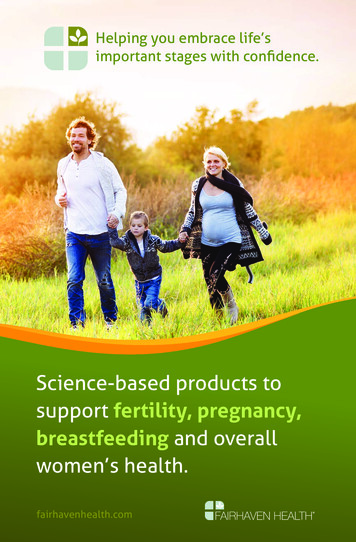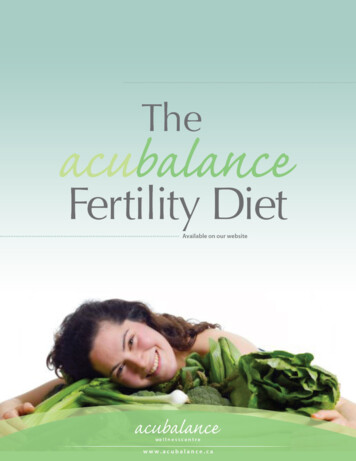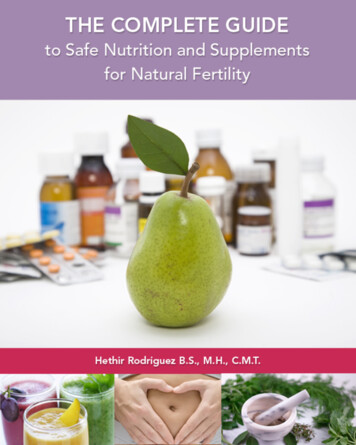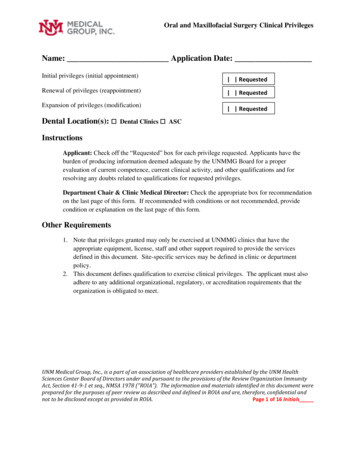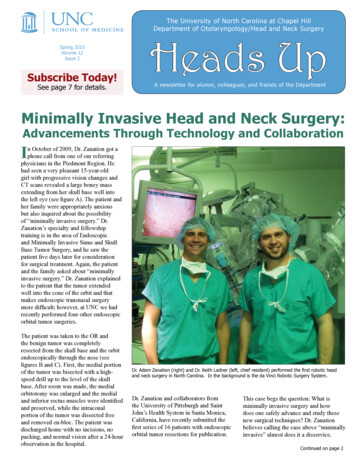
Transcription
Kajiyama et al. BMC Cancer(2019) SEARCH ARTICLEOpen AccessFertility-sparing surgery and oncologicoutcome among patients with early-stageovarian cancer propensity score- matchedanalysis Hiroaki Kajiyama1*, Shiro Suzuki1, Nobuhisa Yoshikawa1, Michiyasu Kawai2, Kimio Mizuno3, Osamu Yamamuro4,Tetsuro Nagasaka5, Kiyosumi Shibata6 and Fumitaka Kikkawa1AbstractBackground: The aim of this study was to investigate how much the risks of recurrence and death are increased asa consequence of selecting fertility-sparing surgery (FSS) in young women with epithelial ovarian cancer (EOC).Methods: After a central pathological review and search of the medical records from 14 collaborating hospitals, anon-randomized, observational cohort study was conducted between 1987 and 2015, including 1183 women withstage I EOC. Finally, a total of 285 patients with stage I EOC at reproductive age were recruited. Oncologicoutcomes were compared between the FSS (N 101) and radical surgery (RS) group (N 184) using a propensityscore (PS)-matching technique to adjust for relevant risk factors: the age, substage, histological type, grade, CA125values, ascites cytology, ascites volume, and chemotherapy.Results: During 66.0 months (median) of follow-up, 42 patients (14.7%) developed recurrence, and 31 patients (10.9%)died. In the original cohort, there was no significant difference in overall survival (OS) or recurrence-free survival (RFS)between the FSS and RS groups {Log-rank: OS (P 0.838), RFS (P 0.377)}. In the PS-matched cohort after adjustmentfor multiple clinicopathologic factors, there was no significant difference in RFS or OS between the FSS and RS groups{RFS (FSS vs. RS), HR: 1.262 (95% CI: 0.559–2.852), P 0. 575; OS (FSS vs. RS), HR: 1.206 (95% CI: 0.460–3.163), P 0.704}.Conclusions: After adjustment for clinicopathologic factors, FSS in itself may not worsen the oncologic outcome inyoung women with early-stage EOC. A large-scale clinical study is necessary to validate the findings.Keywords: Epithelial ovarian carcinoma, Fertility-sparing surgery, Overall survival, Recurrence, Recurrence-free survival,Propensity scoreBackgroundEpithelial ovarian cancer (EOC) is the one of the most lethal cancers among gynecologic malignancies worldwide,with more than 238,700 newly diagnosed cases and 151,900 reported deaths per year [1]. In general, this tumor iscommon in postmenopausal women. However, based onseveral prior studies, 3–17% of patients with EOC are ofreproductive age: under or around 40 years of age [2–6]. Ifwe select conventional surgical procedures in such* Correspondence: kajiyama@med.nagoya-u.ac.jp1Department of Obstetrics and Gynecology., Graduate School of Medicine,Nagoya University, Truma-cho 65, Showa-ku, Nagoya 466-8550, JapanFull list of author information is available at the end of the articlereproductive-age patients, female-specific endocrine andreproductive functions will be lost. Needless to say, it ismost important for us to aim for the complete cure ofthose women with early-stage EOC. Nevertheless, conserving such a function is also crucial for maintaining theirquality of life.Usually, fertility-sparing surgery (FSS) has been acceptablychosen for young patients with an ovarian-confined / capsulated / well-differentiated EOC. Unfortunately, we cannotaccurately estimate rate of recurrence and subsequent mortality will be increased in patients receiving FSS comparedwith radical surgery, reflecting the difficulty of performing arandomized controlled trial. Several researchers have The Author(s). 2019 Open Access This article is distributed under the terms of the Creative Commons Attribution 4.0International License (http://creativecommons.org/licenses/by/4.0/), which permits unrestricted use, distribution, andreproduction in any medium, provided you give appropriate credit to the original author(s) and the source, provide a link tothe Creative Commons license, and indicate if changes were made. The Creative Commons Public Domain Dedication o/1.0/) applies to the data made available in this article, unless otherwise stated.
Kajiyama et al. BMC Cancer(2019) 19:1235attempted to determinate the long-term effectiveness of FSSby comparing the oncologic outcome between two cohorts[7, 8]. Nevertheless, it is difficult to conduct a simple comparison because there are many biases between them, including the substage, tumor differentiation, histological type,and presence or absence of chemotherapy.Recently, there has been increasing interest in applyinga propensity score methodology to reduce or eliminatethe effects of confounding when analyzing observationaldata. In the current study, we investigated the impact ofFSS on recurrence-free and overall survival in young patients with early-stage EOC in a multicentric analysisusing a propensity score-matching technique.MethodsPatient enrollmentBetween January/1987 and December/2015, 4237 patients with malignant ovarian tumors were registeredand accumulated by the Tokai Ovarian Tumor StudyGroup (TOTSG), consisting of 14 collaborating institutions [9]. All histological slides were reviewed bytwo expert pathologists with no knowledge of the patients’ clinical data under a central pathological reviewsystem. Eligible cases included: 1) age under 45 yearsold at the time of the initial diagnosis, 2) histologicallyconfirmed stage I EOC, 3) received initial surgery andperiodic follow-up at the aforementioned institutions.Accordingly, of these, there were 1183 patients withstage I EOC with sufficient clinical information. Consequently, from this database, 285 patients aged younger than or equal to 45 years who had a stage I EOCwere analyzed, including 101 patients who had received FSS and 184 who had undergone radical surgery (RS) (Additional file 2: Figure. S1). As thehistological types, we adopted the World HealthOrganization (WHO) classification criteria. The stagewas assigned according to the International Federationof Gynecology and Obstetrics (FIGO) staging system[10, 11]. This study was approved by the ethics committee of Nagoya University.TreatmentsThe standard surgeries in patients who belonged to theRS cohort were in principal hysterectomy and bilateralsalpingo-oophorectomy with the complete staging surgery. The complete staging surgery was defined as lymphnode evaluation and peritoneal staging. The peritonealstaging included cytology of ascites or washing, and/oromentectomy (or biopsy), and appropriate peritoneal biopsy if necessary. Lymph node evaluation involved oneof the following: 1) lymph node sampling, 2) lymph nodedissection, or 3) palpation and removal of enlargedlymph nodes. The selecting principles in women who received the FSS were as follows: 1) Women had stronglyPage 2 of 7desired to preserve fertility, 2) those were informed ofthe possible benefits and risks of FSS, and signed a consent form in a preoperative counseling session. The surgical approach for these patients were at leastconservation of the contralateral ovary and uterus with afull peritoneal staging. Omentectomy, wedge resection ofthe remaining ovary, and systematic retroperitoneallymphadenectomy were optional. However, the absenceof an enlarged lymph node more than 1 cm in diameterwas confirmed by preoperative imaging; if present, enlarged nodes were appropriately sampled [9].Of all stage I patients, 214 were treated postoperativelywith 3 to 6 cycles of adjuvant platinum-based chemotherapy. A total of 71 patients (24.9%) did not receiveadjuvant platinum-based chemotherapy due to severecomplications, the patients’ wishes, meeting the criterionof omission (stage IA/grade 1–2), or the decision of eachinstitution. Details of the chemotherapy regimen in eachperiod were as follows: CAP [cyclophosphamide (300mg/m2), adriamycin (30 mg/m2), and cisplatin (70 mg/m2)] (1986–1989); CAP or PVB [cisplatin (70 mg/m2),vinblastine (6 mg/m2), and bleomycin (12 mg/m2)](1989–1991); PVB or PP [carboplatin (300 mg/m2) andcisplatin (70 mg/m2)] (1992–2000); TC {paclitaxel (180mg/m2) and carboplatin [area under curve (AUC 5–6]}(2000–2002); TC or DC [docetaxel (70 mg/m2) and carboplatin (AUC 5–6)] (2003–2013); TC or DC with orwithout bevacizumab (15 mg/kg) (2013–) [12].Follow-up and analysisAll patients received a thorough follow-up and periodiccheckups, including gynecologic examination, CA125 evaluation, ultrasonography, and radiologic imaging based on theGynecologic Cancer InterGroup (GCIG) criteria [9, 13]. Therecurrence-free survival (RFS) was defined as the time interval between the date of surgery and that of recurrence orthe last follow-up. The overall survival (OS) was defined asthe time between the date of surgery and that of the lastfollow-up or death from any cause. The distributions of clinicopathologic events were evaluated using the Chi-squaretests. To balance the patient and tumor characteristics between FSS and RS groups, propensity score (PS) matchingwas performed [14]. PS was estimated by multivariate logistic regression models for the probability of FSS adjusting forage, FIGO stage, histological type, tumor grade, preoperativeCA125 value, ascites volume, cytology of ascites, and presence or absence of chemotherapy. Patients with FSS werematched with RS counterparts according to PS, leading toan even distribution of potential confounding factors in bothgroups. Within the original and PS-matched cohort, survivalcurves were generated using Kaplan-Meier methods. A Coxproportional hazards regression model was used to examineassociations between the type of surgery (FSS vs. RS) andRFS/OS. All statistical analyses were performed with SPSS
Kajiyama et al. BMC Cancer(2019) 19:1235Page 3 of 7Ver. 26 (IBM Japan, Tokyo) and JMP Pro Ver.10.0 (SAS Institute Japan). A P-value of 0.05 was considered significant.ResultsPatients’ characteristicsIn total, 285 women were identified for the current analysis. Patients’ characteristics are shown in Table 1. Thecohort included 101 women (35.4%) who underwent FSSand 184 women (64.6%) who had RS. The median (SD)age of those who received FSS was 33 (7.6) years. Patients who underwent FSS were significantly youngerthan were those who received RS (P 0.0001) (Table 1).The median follow-up duration of all patients was 66.0months. There was no difference in the follow-up duration between the FSS group (median: 62.6 months) andTable 1 Patients’ characteristicsRSNP-value*FSS%N%Total184101Age 5429.32423.8Serous158.233.0Mix31.600.010.511.0 0.0001FIGO stage0.3004#1Histological type#1Others 21.8 35 U/mL7138.64847.5 35 U/mL11361.45352.50.0005CA1250.143Ascites volume 100 mL15684.88786.1 100 tes cytology0.0887Chemotherapy0.0007FIGO Internatinal Federation of Gynecology and Obstetrics, #1: IA vs. IB vs. ICRS group (68.7 months) (P 0.296). Regarding the distribution of the substage, preoperative CA125 value, volume of ascites, and ascites cytology, there was nodifference between the two groups. With regard to histological types, a clear-cell histology was more frequentlyobserved in the RS group than in the FSS group (P 0.0001). In addition, adjuvant chemotherapy was morefrequently conducted in the RS group than in the FSSgroup (P 0.0007).Oncologic outcome using the original cohortWith follow-up of a total of 285 patients, 42 patients(14.7%) developed recurrence. In addition, 31 patients(10.9%) died of the disease. Recurrent disease was notedin 17 (16.8%) patients in the FSS group and 25 (13.6%)patients in the RS group. Death was noted in 11 (10.9%)patients in the FSS group and 20 (10.9%) patients in theRS group. In the original cohort, the 5-year recurrencefree survival rates (95% CI) of the FSS and RS groupswere 80.8 (71.1–87.8)% and 86.9 (80.6–91.4)%, respectively. As a result, we did not identify any significant difference between the two groups (Log-rank: P 0.377)(Fig.1). In addition, the 5-year overall survival rates (95%CI) of the FSS and RS group were 87.5 (78.8–93.0)% and91.9 (86.5–95.3)%, respectively. Also, there was no significant difference between the two groups (Log-rank:P 0.838) (Fig.2).Oncologic outcome using the PS-matched cohortCalculation of PS was then performed for each patientbased on eight clinicopathologic variables: the age, substage, histological type, grade, volume of ascites, CA125value, cytology, and presence or absence of chemotherapy. The reasons why these conditioning variables wereselected were that they were relevant to survival butwere not balanced in either the FSS or RS setting. Consequently, 178 matched pairs were generated using PSmatching. Additional file 1: Table S3 summarizes patients’ characteristics after matching. After PS-matching,all conditioning variables except for the age and performance of chemotherapy were well-balanced (Additional file 1: Table S3). In the PS-matching cohort, the5-year RFS (95% CI) rate was 80.8 (71.1–87.8)% for theFSS group and 84.7 (74.4–91.3)% for the RS group (Logrank: P 0.825) (Fig.3). In addition, the 5-year overallsurvival rates were 87.5 and 91.8% in patients with FSSand RS, respectively (Fig.4). The difference was alsonon-significant between the two surgical groups (Logrank: P 0.798). Thus, after the PS-matching, FSS andOS maintained the similar trends with the full dataset.Table S1 summarizes the results of a multivariableCox hazard model for recurrence outcomes using theoriginal cohort data. In a crude analysis, there was noassociation between the surgical type and RFS {HR
Kajiyama et al. BMC Cancer(2019) 19:1235Page 4 of 7Fig. 1 Kaplan-Meier-estimated recurrence-free survival (RFS) on stratifying by the surgical type {FSS (N 101) vs. RS (N 184)}. The original cohort(95% CI): 1.319 (0.712–2.442), P 0.379}. Even afteradjusting for several combinations of clinicopathologicconfounders listed, we did not identify any significantprognostic correlation between the surgical type andRFS {adjusted by multi-factors: HR (95% CI): 1.543(0.722–3.297), P 0.263}. Similarly, there was no significant prognostic correlation between the performance of FSS and OS, even after adjusting for severalcombinations of clinicopathologic confounders {adjusted by age, sub-stage, grade, CA125 value, ascitescytology, and chemotherapy: HR (95% CI): 1.763(0.725–4.288), P 0.211} (Additional file 1: Table S2).In Cox multivariable hazard model, after adjustment for multiple confounders, including the age,PS, surgical type, substage, grade, CA125 value, ascites cytology, and chemotherapy, the performance ofFSS itself was not a significant predictor of the riskof recurrence {adjusted HR (95% CI): 1.262 (0.559–2.852), P 0.575} (Additional file 1: Table S4). Similarly, in multivariable analyses for OS, the sameFig. 2 Kaplan-Meier-estimated overall survival (OS) on stratifying by the surgical type {FSS (N 101) vs. RS (N 184)}. The original cohort
Kajiyama et al. BMC Cancer(2019) 19:1235Page 5 of 7Fig. 3 Kaplan-Meier-estimated RFS on stratifying by the surgical type {FSS (N 101) vs. RS (N 77)}. The PS-matched cohort. Calculation of PS wasthen performed for each patient based on eight clinicopathologic variables, including the age, substage, histological type, grade, volume ofascites, ascites cytology, presence or absence of chemotherapytendencies were observed {adjusted HR (95% CI):1.206 (0.460–3.163), P 0.704} (Table 2).DiscussionA woman who selects FSS receives the benefits of preserving the possibility of having a child in the future, regardless of the risk of unexpected recurrence. When weconsider whether FSS should be selected for a womanwith early-stage EOC at reproductive age, we subconsciously fear the risk of a future recurrence or subsequent death from disease. Here, we encounter thefundamental question of how much the preservation ofthe contralateral ovary and uterus is associated with therecurrence. On considering clinical information on theextent that recurrence is increased or how differentlong-term survival is between patients with FSS andthose receiving radical surgery, it is beneficial for the patient and physician to share risk-and-benefit data beforeselecting this surgery. The randomized controlled trial(RCT) is a solution to this problem, but it is actuallyvery difficult to perform for ethical reasons. In our earlier study, we preliminarily reported that the 5-yearFig. 4 Kaplan-Meier-estimated OS on stratifying by the surgical type {FSS (N 101) vs. RS (N 77)}. The PS-matched cohort
Kajiyama et al. BMC Cancer(2019) 19:1235Page 6 of 7Table 2 Cox Proportional Hazards Analyses of OS among patients who underwent FSSPropensity-Matched patientsModelHazard Ratio95% CIP-valueUnadjusted0.8970.388–2.0720.799Adjusted for PS1.0540.398–2.7890.916Adjusted for PS, age, sub-stage#1, and ascites volume1.2810.461–3.5560.635Adjusted for PS and multi-factors#21.2060.460–3.1630.704OS overall survival, FSS fertility-sparing surgery, PS propensity score, #1: IA/IB/IC1 vs. IC2/IC3, #2: surgery, age, substage, grade, CA125 value, ascites cytology,and chemotherapyoverall survival rates in the three groups of patients withstage I EOC were 90.8% (FSS at reproductive age), 88.3%(non-FSS at reproductive age), and 90.6% (non-FSS inthe elderly), concluding that there was no significant difference on three-group comparison [15]. Since then, several retrospective studies have demonstrated similarresults, suggesting the non-inferiority of the long-termoutcome in patients who underwent FSS, compared withthose received conventional surgery [7, 8]. Nevertheless,these investigations had a critical limitation associatedwith any retrospective study, involving the possibility ofselection bias and treatment heterogeneity. Even if showing a non-significant difference in oncologic outcomes, anumber of clinicopathological profiles were inconsistentbetween the two cohorts. At least, considering majorclinical backgrounds of patients with stage I EOC, thethree categories of “substage”, “degree of differentiation”,and “histological type” overlap with one another and arecomplicated. For example, we can easily expect that patients with favorable clinicopathological factors, including an encapsulated, well-differentiated, chemosensitivehistological type will tend to undergo FSS. Thus, considering this underlying bias, the results showing no difference in the oncologic outcome may erroneously suggestthat FSS has a negative effect on survival. An RCT is actually very difficult to perform because of ethical problems. PS-matching is an efficient methodology to reducebias by balancing many measured confounders betweentreatment and control groups. Recently, abundant evidence revealed the usefulness of a PS-matching technique mimicking some aspects of an RCT [14, 16–19].In the present study, to assess the appropriateness ofFSS, we compared the survival between larger groups ofpatients who had undergone FSS and those who had received non-FSS radical surgery using the original andPS-matching cohorts. Consequently, the comparison between the two surgical groups revealed no difference inrecurrence-free or overall survival rates. Thus, thecurrent PS-matching study provides evidence that theimplementation of FSS does not necessarily lead tolower progression-free and overall survival than conventional non-FSS surgery. Furthermore, we showed thetherapeutic efficacy of FSS in the treatment of early-stage EOC at reproductive age. Taken together, FSS isworthy of consideration for young patients diagnosedwith early-stage EOC.Our current work still includes several limitations. Initially, because the present study was essentially a retrospective study, many factors relevant to the treatmentdecision were not as strictly controlled as they would bein an RCT. Particularly, our PS-matching model was stillnot balanced for the age and receipt of adjuvant chemotherapy. Subsequently, the composition of the study subjects may have been influenced by referral bias owing toits multicentric design for a long-term study period.Lastly, several critical data, such as socioeconomic profiles, were not provided, which may affect the reliabilityof the estimated PS. In contrast, the strengths of ourstudy: firstly, the performance of central pathological review by expert pathologists for gynecologic malignancy;secondly, the relatively high patient number; and thirdly,the same chemotherapeutic criteria and protocol as forthe identical study group (TOTSG group).ConclusionIn summary, we examined the fundamental question ofhow much the preservation of the contralateral ovary anduterus is associated with recurrence. On considering a clinical information on the extent that recurrence is increasedor how different long-term survival is between patients withFSS and those receiving radical surgery, it is beneficial forthe patient and physician to share risk-and-benefit data before selecting this surgery. On this occasion, we merely putforward a hypothesis that patients with stage I EOC whohave undergone FSS may not show a poorer prognosis thanthose receiving radical surgery. Concerning the patients’specificity and ethical consideration, an RCT is unlikelyfrom now on. In the present study, we included womenaged in their early 40s. With the progression of the trendsof late marriage and a low birthrate, we will more frequently encounter this demographic in our daily clinicalpractice. The number of women over 40 years of age seeking infertility treatment has been steadily increasing [20].Actually, the percentage of women in their early 40s requiring assisted reproductive technology has increased significantly from 10 to 15% in the early 2000s to 20 to 25% in
Kajiyama et al. BMC Cancer(2019) 19:12352009 [20–22]. Thus, we should reassess the possibility ofFSS based on a larger number of patients, including thosein their 40s. Taken together, we should accumulate furthercases to clarify treatment prospects. We hope that the hypothesis will be supported by accumulating more patientstreated with FSS through a large-scale clinical registry system developed in the near future.Supplementary informationSupplementary information accompanies this paper at al file 1: Table S1. Cox Proportional Hazards Analyses of RFSamong patients who underwent FSS (Original cohort), Table S2. CoxProportional Hazards Analyses of OS among patients who underwent FSS(Original cohort), Table S3. Patients’ characteristics (PS-matching), TableS4. Cox Proportional Hazards Analyses of RFS among patients whounderwent FSS.Additional file 2: Figure S1. Patient flowchart.AbbreviationsEOC: Epithelial ovarian carcinoma; FSS: Fertility-sparing surgery; OS: Overallsurvival; PS: Propensity score; RFS: Recurrence-free survival; RS: RadicalsurgeryAcknowledgementsWe sincerely thank Drs. Y. Kinoshita (Ogaki Municipal Hospital), K. Sakakibara(Okazaki Municipal Hospital), A. Takeda (Gifu Prefectural Tajimi Hospital), T.Misawa (Nagoya Ekisaikai Hospital), T. Ishida (Handa City Hospital), H.Ishikawa (Nagoya Memorial Hospital), and K. Matsuzawa (Anjyo KoseiHospital) who collaborated in data collection.Authors’ contributionsHK: data analysis and interpretation, drafting manuscript. SS, NY, MK, KM, OY:data collection. TN: pathological evaluation. KS: supervision, revisingmanuscript. FK: supervision and funding. All authors have read and approvedthe manuscript, and ensure that this is the case.FundingNone.Availability of data and materialsThe datasets generated and/or analyzed during the current study are notpublicly available due owing to data privacy policy at our facility, but areavailable from the corresponding author on reasonable request.Ethics approval and consent to participateThe study was approved by the Ethics Committee, Nagoya University,Nagoya, Japan (approval number 2006–0357-2). The need for each consentwas waived by the Committee based on national regulations.Consent for publicationNot applicable.Competing interestsThe authors declare that they have no competing interests.Author detailsDepartment of Obstetrics and Gynecology., Graduate School of Medicine,Nagoya University, Truma-cho 65, Showa-ku, Nagoya 466-8550, Japan.2Department of Obstetrics and Gynecology, Toyohashi Municipal Hospital,Toyohashi, Japan. 3Department of Department of Obstetrics and Gynecology,Nagoya First Red-cross Hospital, Nagoya, Japan. 4Department of Obstetricsand Gynecology, Nagoya Second Red-cross Hospital, Nagoya, Japan.5Division of Medical Laboratory Sciences, School of Health Science, NagoyaUniversity, Nagoya, Japan. 6Department of Obstetrics and Gynecology,Bantane Hospital, Fujita Health University, Nagoya, Japan.1Page 7 of 7Received: 27 August 2019 Accepted: 3 December 2019References1. Siegel RL, Miller KD, Jemal A. Cancer statistics, 2016. CA Cancer J Clin. 2016;66:7–30.2. Duska LR, Chang YC, Flynn CE, et al. Epithelial ovarian carcinoma in thereproductive age group. Cancer. 1999;85:2623–9.3. Plaxe SC, Braly PS, Freddo JL, McClay E, Kirmani S, Howell SB. Profiles ofwomen age 30–39 and age less than 30 with epithelial ovarian cancer.Obstet Gynecol. 1993;81:651–4.4. Rodriguez M, Nguyen HN, Averette HE, et al. National survey of ovariancarcinoma XII. Epithelial ovarian malignancies in women less than or equalto 25 years of age. Cancer. 1994;73:1245–50.5. Swenerton KD, Hislop TG, Spinelli J, LeRiche JC, Yang N, Boyes DA. Ovariancarcinoma: a multivariate analysis of prognostic factors. Obstet Gynecol.1985;65:264–70.6. Smedley H, Sikora K. Age as a prognostic factor in epithelial ovariancarcinoma. Br J Obstet Gynaecol. 1985;92:839–42.7. Fruscio R, Ceppi L, Corso S, et al. Long-term results of fertility-sparingtreatment compared with standard radical surgery for early-stage epithelialovarian cancer. Br J Cancer. 2016;115:641–8.8. Park JY, Suh DS, Kim JH, Kim YM, Kim YT, Nam JH. Outcomes of fertilitysparing surgery among young women with FIGO stage I clear cellcarcinoma of the ovary. Int J Gynaecol Obstet. 2016;134:49–52.9. Kajiyama H, Yoshihara M, Tamauchi S, Yoshikawa N, Suzuki S, Kikkawa F.Fertility-Sparing surgery for young women with ovarian endometrioidcarcinoma: a multicenteric comparative study using inverse probability oftreatment weighting. Eur J Obstet Gynecol Reprod Biol X. 2019;4:100071.10. Zeppernick F, Meinhold-Heerlein I. The new FIGO staging system forovarian, fallopian tube, and primary peritoneal cancer. Arch Gynecol Obstet.2014;290:839–42.11. Chen VW, Ruiz B, Killeen JL, Cote TR, Wu XC, Correa CN. Pathology andclassification of ovarian tumors. Cancer. 2003;97:2631–42.12. Suzuki S, Kajiyama H, Shibata K, et al. Is there any association betweenretroperitoneal lymphadenectomy and survival benefit in ovarian clear cellcarcinoma patients? Ann Oncol. 2008;19:1284–7.13. Rustin GJ, Vergote I, Eisenhauer E, et al. Definitions for response andprogression in ovarian cancer clinical trials incorporating RECIST 1.1 and CA125 agreed by the Gynecological Cancer Intergroup (GCIG). Int J GynecolCancer. 2011;21:419–23.14. Joffe MM, Rosenbaum PR. Invited commentary: propensity scores. Am JEpidemiol. 1999;150:327–33.15. Kajiyama H, Shibata K, Mizuno M, et al. Long-term survival of young womenreceiving fertility-sparing surgery for ovarian cancer in comparison withthose undergoing radical surgery. Br J Cancer. 2011;105:1288–94.16. Hullsiek KH, Louis TA. Propensity score modeling strategies for the causalanalysis of observational data. Biostatistics. 2002;3:179–93.17. Mitra N, Indurkhya A. A propensity score approach to estimating the costeffectiveness of medical therapies from observational data. Health Econ.2005;14:805–15.18. Rosenbaum PR. Discussing hidden bias in observational studies. Ann InternMed. 1991;115:901–5.19. Schneeweiss S, Rassen JA, Glynn RJ, Avorn J, Mogun H, Brookhart MA. Highdimensional propensity score adjustment in studies of treatment effectsusing health care claims data. Epidemiology. 2009;20:512–22.20. Cabry R, Merviel P, Hazout A, et al. Management of infertility in women over40. Maturitas. 2014;78:17–21.21. Ferraretti AP, Goossens V, Kupka M, et al. Assisted reproductive technologyin Europe, 2009: results generated from European registers by ESHRE. HumReprod. 2013;28:2318–31.22. Nyboe Andersen A, Gianaroli L, Nygren KG, European IVFmp, EuropeanSociety of Human R, Embryology. Assisted reproductive technology inEurope, 2000. Results generated from European registers by ESHRE. HumReprod. 2004;19:490–503.Publisher’s NoteSpringer Nature remains neutral with regard to jurisdictional claims inpublished maps and institutional affiliations.
with 3 to 6cycles of adjuvant platinum-based chemo-therapy. A total of 71 patients (24.9%) did not receive adjuvant platinum-based chemotherapy due to severe complications, the patients' wishes, meeting the criterion of omission (stage IA/grade 1-2), or the decision of each institution. Details of the chemotherapy regimen in each

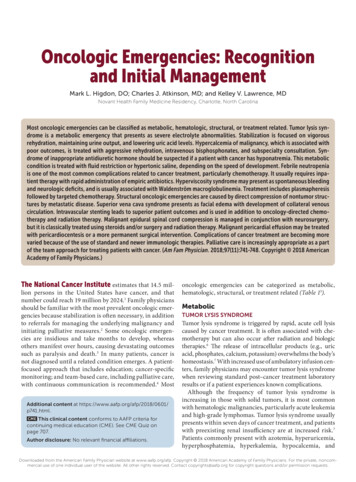
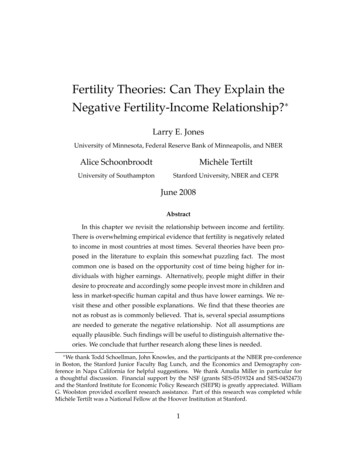
![Myanmar 2015-16 Demographic and Health Survey - Key Findings [SR235]](/img/66/sr235.jpg)

